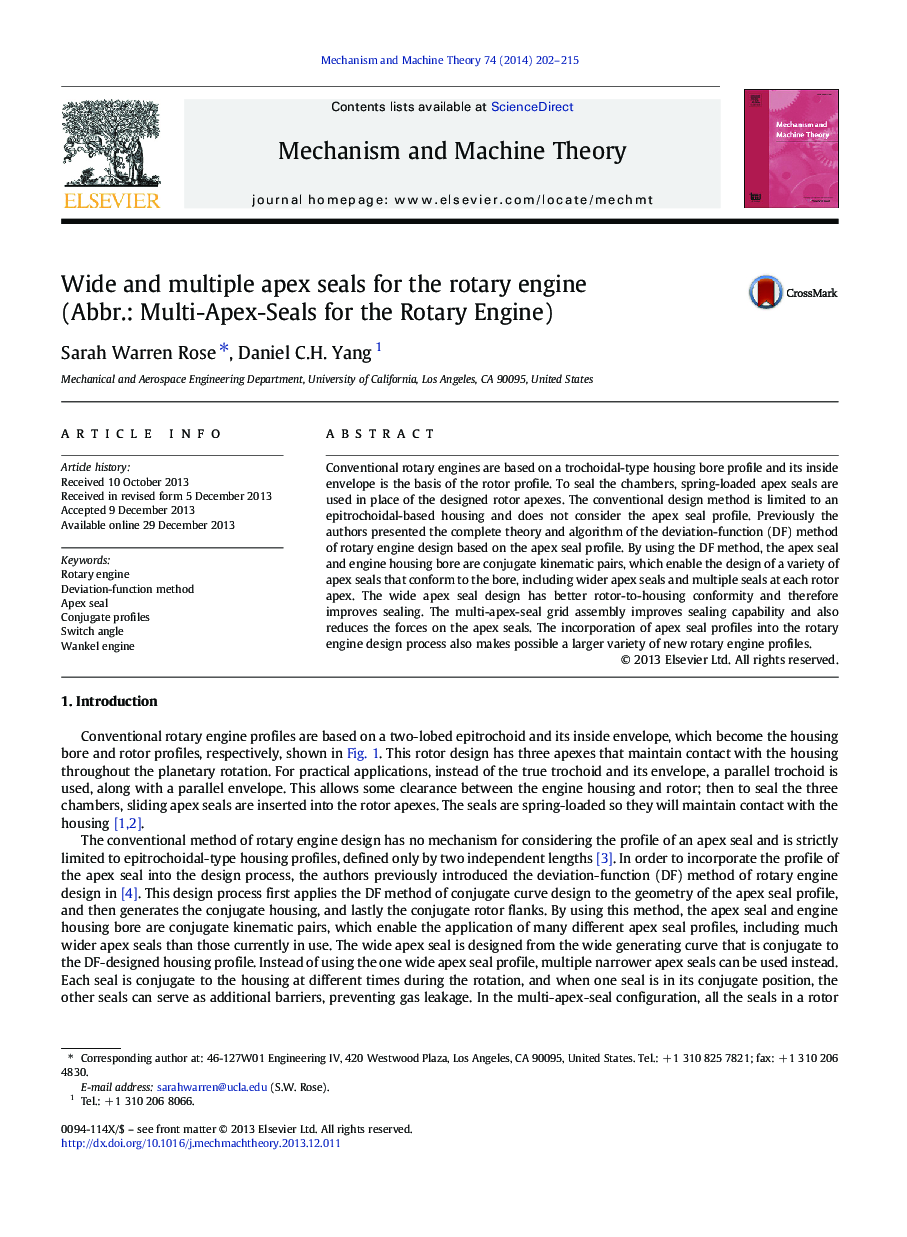| Article ID | Journal | Published Year | Pages | File Type |
|---|---|---|---|---|
| 7180086 | Mechanism and Machine Theory | 2014 | 14 Pages |
Abstract
Conventional rotary engines are based on a trochoidal-type housing bore profile and its inside envelope is the basis of the rotor profile. To seal the chambers, spring-loaded apex seals are used in place of the designed rotor apexes. The conventional design method is limited to an epitrochoidal-based housing and does not consider the apex seal profile. Previously the authors presented the complete theory and algorithm of the deviation-function (DF) method of rotary engine design based on the apex seal profile. By using the DF method, the apex seal and engine housing bore are conjugate kinematic pairs, which enable the design of a variety of apex seals that conform to the bore, including wider apex seals and multiple seals at each rotor apex. The wide apex seal design has better rotor-to-housing conformity and therefore improves sealing. The multi-apex-seal grid assembly improves sealing capability and also reduces the forces on the apex seals. The incorporation of apex seal profiles into the rotary engine design process also makes possible a larger variety of new rotary engine profiles.
Keywords
Related Topics
Physical Sciences and Engineering
Engineering
Industrial and Manufacturing Engineering
Authors
Sarah Warren Rose, Daniel C.H. Yang,
